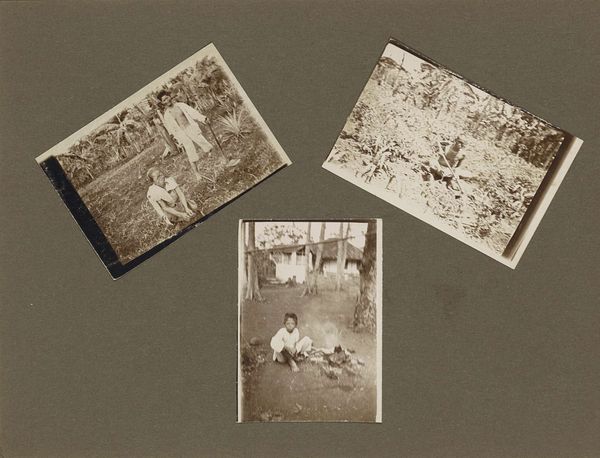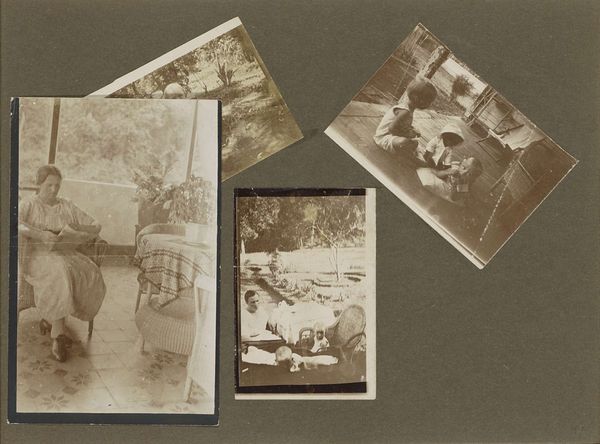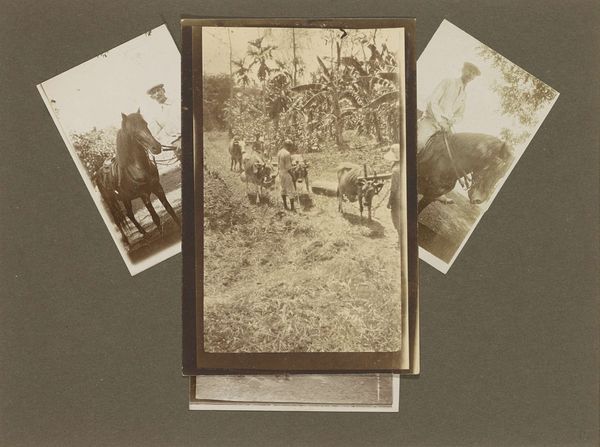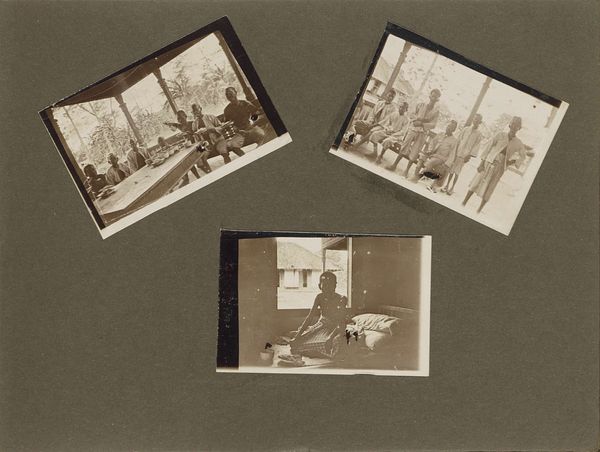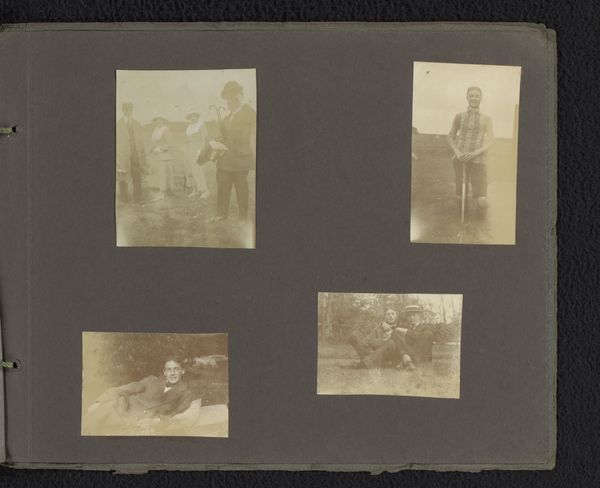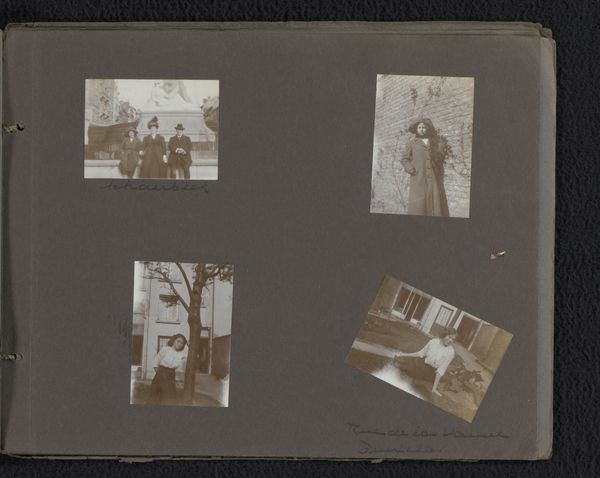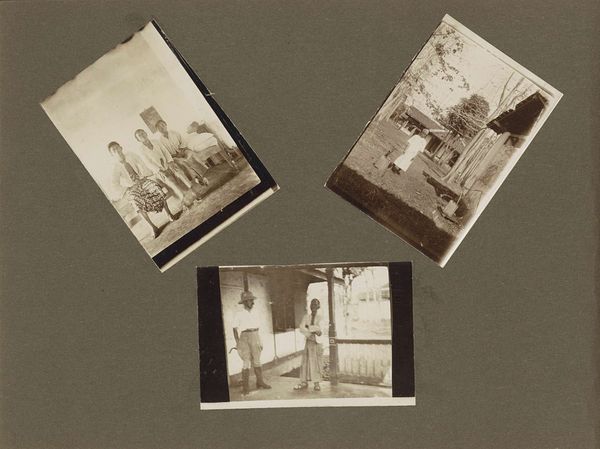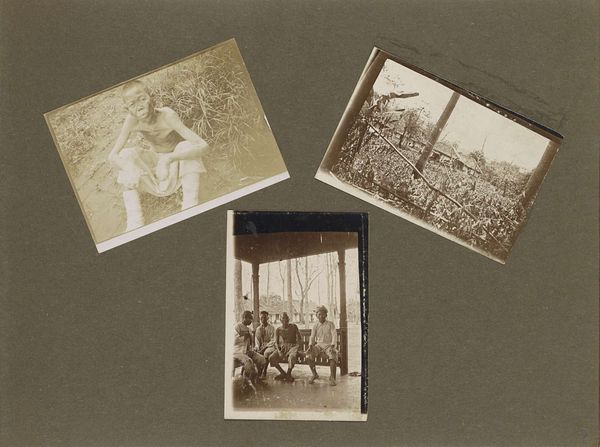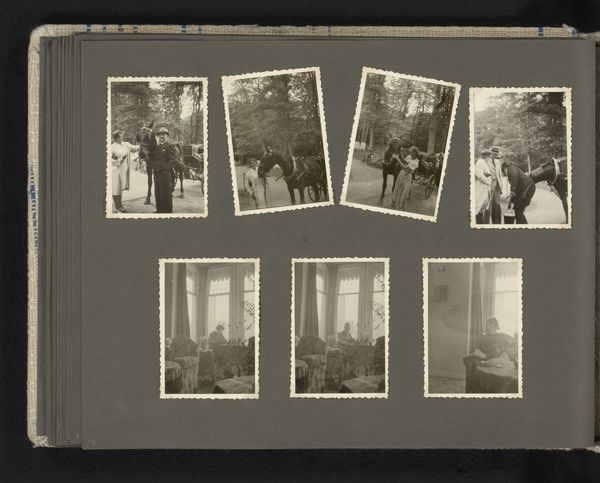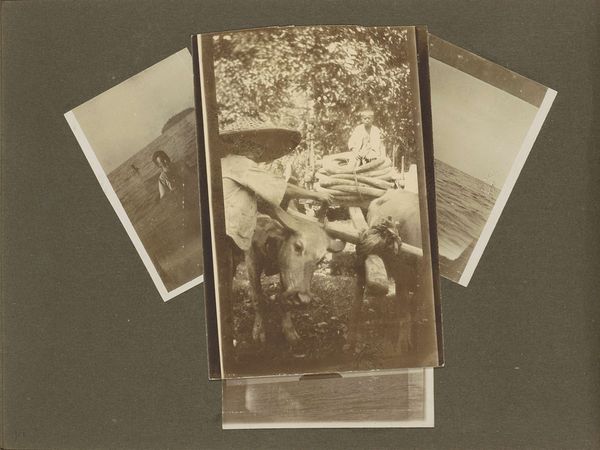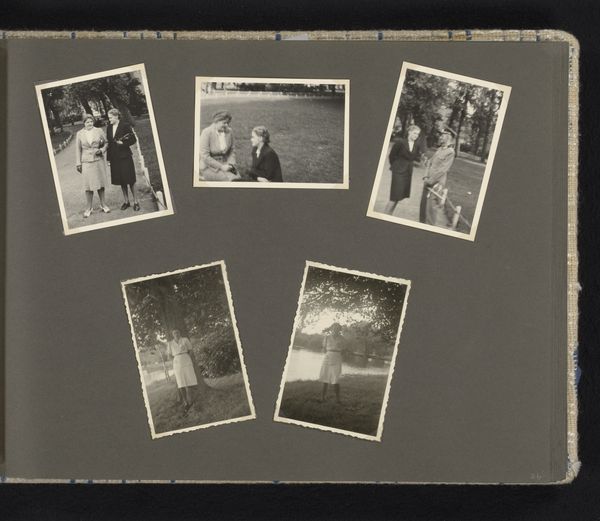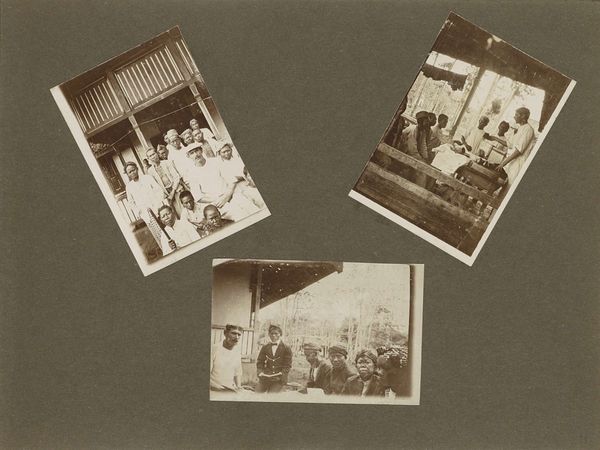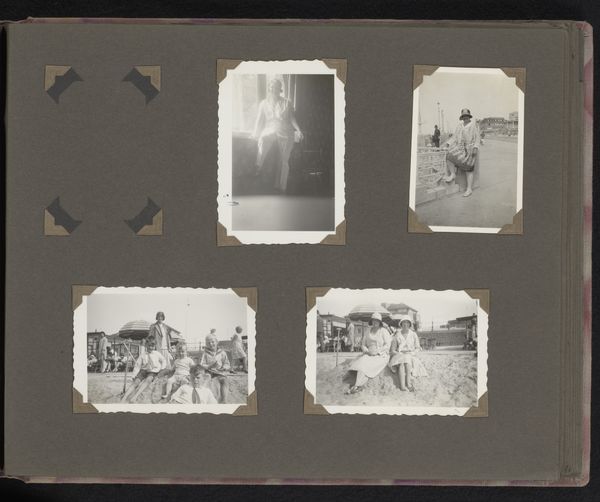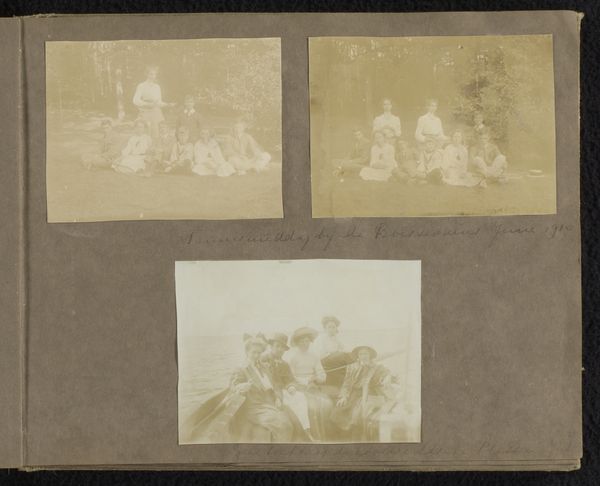
c-print, photography
#
portrait
#
c-print
#
photography
#
child
#
genre-painting
#
realism
Dimensions: height 190 mm, width 260 mm
Copyright: Rijks Museum: Open Domain
Curator: These poignant images form a photographic document of the Danaradja Leper Colony taken around 1922. Each sepia-toned C-print presents a snapshot of life within its confines. Editor: The mood is somber, even melancholic. Despite the small format and somewhat degraded condition of the prints, one can sense the vulnerability in those portrayed, especially the children. Curator: The images force us to confront the stark reality of colonial medical practices and the socio-political segregation of those afflicted with leprosy. How were such institutions portrayed and perceived, and who had access to see this imagery? What narratives did they enforce? Editor: Exactly. How was the very act of photographing, the institutional gaze itself, implicated in the disempowerment of this community? Was it framed as "humanitarian" outreach or, on the contrary, for propaganda and social control, constructing leprosy as a ‘deviant’ status? And what does it say about societal anxieties around contagion? Curator: Such images often became tools for the reinforcement of social norms. Visual representations can deeply impact attitudes and policy and this photographic document contributes a narrative about disease, otherness, and the exercise of colonial power. Editor: Beyond policy, this photograph brings a specific group and personhood into the visual discourse, complicating earlier views and biases by adding details about class, age, race, and especially disease. Curator: It makes us question the historical context. Who took these photos, and for what purpose? What biases and pre-conceptions about identity influenced both the photography and how they were viewed by those in positions of power at the time? Editor: And, fundamentally, this work serves as an appeal for sensitivity. This pushes me to reconsider the way images participate in the representation and distribution of social inequalities in our current moment. Curator: Yes. They provide essential historical memory to inform more just frameworks for visual media today.
Comments
No comments
Be the first to comment and join the conversation on the ultimate creative platform.
